Meta Description:
Discover effective nutritional approaches to weight loss in 2024. Learn about balanced diets, portion control, macronutrients, and practical tips to achieve sustainable weight loss.
Introduction:
Looking to shed some pounds while staying healthy? You’re not alone! Weight loss journeys can feel overwhelming, but the right nutritional strategies can make all the difference. Whether it’s understanding macronutrients, choosing the right portion sizes, or mastering the art of mindful eating, nutrition is at the heart of effective weight loss. Did you know that nearly 70% of weight loss success is tied to diet? Let’s dive into the world of nutritional approaches that are proven, practical, and perfect for achieving your goals in 2024!
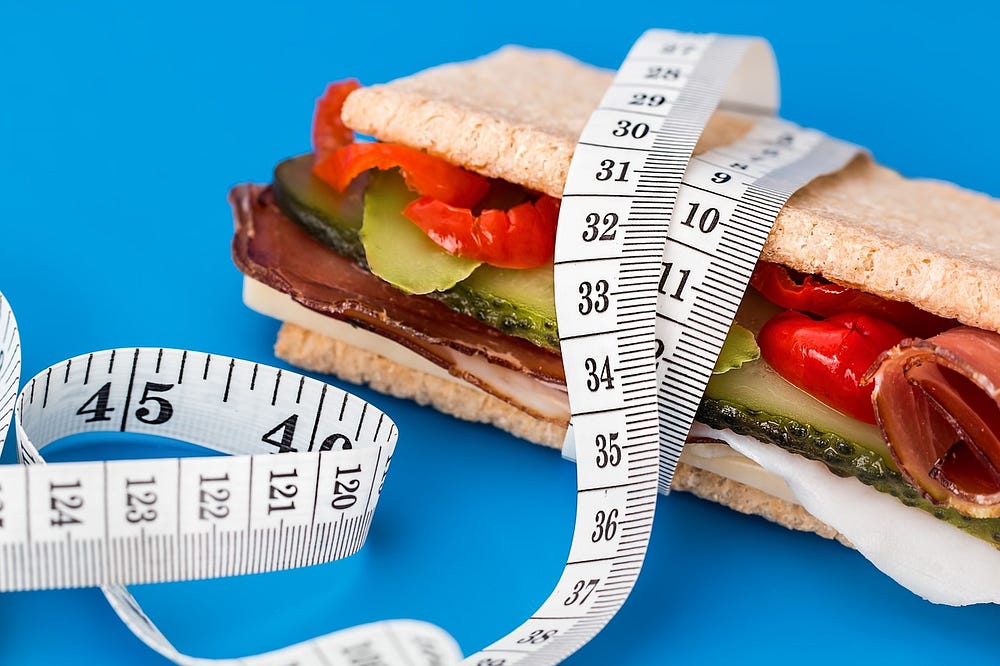
Main Headings:
1. Understanding the Basics of Weight Loss Nutrition
- The role of calories in weight management
- Energy balance: calories in vs. calories out
- How macronutrients (proteins, carbs, and fats) affect weight loss
- Common misconceptions about weight loss diets
2. The Importance of Portion Control
- Why portion sizes matter for weight loss
- Tips for estimating proper portions without a scale
- How to build a balanced plate using the “plate method”
3. Incorporating Whole Foods into Your Diet
- Why whole foods are better than processed options
- The role of fiber-rich foods in controlling hunger
- Top whole foods for weight loss: fruits, vegetables, and lean proteins
4. The Role of Macronutrients in Weight Loss
- Proteins: How they boost metabolism and support muscle retention
- Carbohydrates: Choosing complex carbs for sustainable energy
- Fats: The difference between healthy and unhealthy fats
5. The Power of Hydration and Beverages
- How water aids in weight loss
- Beverages to avoid: sugary drinks and hidden calories
- Healthy drink alternatives: green tea, herbal teas, and infused water
6. Mindful Eating Techniques for Long-Term Success
- What is mindful eating, and why does it work?
- Tips for avoiding emotional eating and binge-eating triggers
- How to listen to your body’s hunger and fullness cues
7. Popular Weight Loss Diets: Pros and Cons
- A look at intermittent fasting, keto, and Mediterranean diets
- Evaluating diets for long-term sustainability
- Why no “one size fits all” approach exists
8. Supplements and Weight Loss: Do They Help?
- Popular supplements for weight loss (e.g., green tea extract, protein powders)
- Understanding when supplements are helpful vs. unnecessary
- Risks of relying solely on supplements
Semantic Keywords:
- Weight loss nutrition
- Healthy weight loss
- Portion control tips
- Balanced diet for weight loss
- Macronutrients and weight loss
- Calories for weight loss
- Whole foods diet
- Sustainable weight loss tips
- Healthy eating for weight loss
- Weight loss meal plans
- Fiber for weight loss
- Low-calorie diet
- Protein for weight loss
- Healthy fats
- Complex carbohydrates
- Mindful eating tips
- Best weight loss diets
- Intermittent fasting
- Mediterranean diet benefits
- Keto diet for weight loss
- Hydration and weight loss
- Green tea for weight loss
- Sugary drinks to avoid
- Emotional eating strategies
- Plate method for portion control
- Healthy meal prep ideas
- Metabolism-boosting foods
- Exercise and nutrition
- Role of fiber in weight loss
- Fat-burning foods
- Low-sugar snacks
- Weight loss motivation
- Natural weight loss tips
- Nutrition myths debunked
- Low-carb meal ideas
- Calorie tracking apps
- Healthy breakfast ideas
- Gut health and weight loss
- Protein powder benefits
- Supplements for weight loss
- Smart grocery shopping ti
- Meal timing for weight loss
- Healthy fast food choices
- Cheat meals and weight loss
- Foods to avoid for weight loss
- Plant-based diet benefits
- Anti-inflammatory diet
- Weight loss success stories
- Easy weight loss recipes
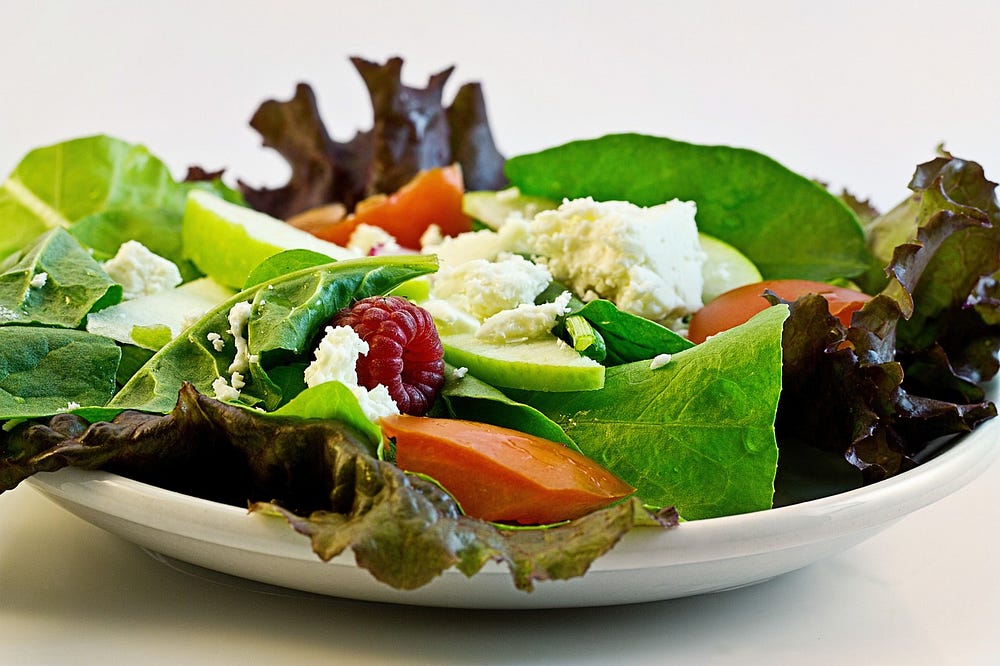
Understanding the Basics of Weight Loss Nutrition
Understanding the fundamentals of nutrition is key to weight loss. Let’s break it down step by step so you can start your journey with confidence and clarity.
The Role of Calories in Weight Management
Calories are the energy your body needs to function. Every activity, from breathing to running, burns calories. Weight loss occurs when you consume fewer calories than your body burns, creating a calorie deficit. It’s not just about eating less — it’s about eating smarter.
- Each pound of body weight roughly equals 3,500 calories.
- Small, consistent deficits over time are more sustainable than drastic cuts.
- Tracking your calorie intake can help you stay on target.
Energy Balance: Calories In vs. Calories Out
Think of your body as a balance scale:
- Calories In: The food and beverages you consume.
- Calories Out: Energy burned through basic bodily functions (like breathing) and activities (like walking or exercising).
When “calories out” exceeds “calories in,” weight loss happens. However, too large a deficit can lead to fatigue and muscle loss, so finding a healthy balance is crucial.
How Macronutrients Affect Weight Loss
Macronutrients — proteins, carbohydrates, and fats — are the building blocks of your diet. Each plays a unique role in weight loss:
- Proteins:
- Help build and repair muscle.
- Keep you feeling full longer, reducing cravings.
- Boost your metabolism slightly during digestion (thermic effect).
- Sources: Lean meats, eggs, beans, tofu.
- Carbohydrates:
- Provide energy for daily activities and workouts.
- Complex carbs (like whole grains) digest slowly, offering sustained energy and preventing hunger spikes.
- Sources: Brown rice, quinoa, oats, sweet potatoes.
- Fats:
- Essential for hormone regulation and nutrient absorption.
- Healthy fats (like omega-3s) can support heart health and satiety.
- Sources: Avocados, nuts, olive oil, fatty fish.
Balancing these macronutrients is essential to achieve a sustainable weight loss plan that doesn’t leave you feeling deprived.
Common Misconceptions About Weight Loss Diets
The world of weight loss is filled with myths that can derail your progress. Here are some common ones:
- “All calories are equal”: While calories matter, the quality of those calories affects hunger, energy levels, and overall health.
- “Carbs are bad”: Carbohydrates are not the enemy. Choosing complex carbs over refined ones makes all the difference.
- “Fat makes you fat”: Dietary fat doesn’t directly cause weight gain; excess calories do.
- “Crash diets work”: Rapid weight loss often leads to muscle loss and is rarely sustainable.
Understanding these misconceptions helps you focus on what truly matters: a balanced, realistic approach to nutrition.
The Importance of Portion Control
Portion control plays a critical role in weight loss. Even the healthiest foods, when eaten in excess, can contribute to weight gain. Let’s explore why portion sizes matter and how you can manage them effectively without feeling restricted.
Why Portion Sizes Matter for Weight Loss
Portion sizes directly influence the number of calories you consume. Overestimating portions is a common reason why people struggle to lose weight, even when eating nutritious foods.
- Calorie Awareness: Eating large portions can lead to consuming more calories than your body needs, even if the food is “healthy.”
- Preventing Overeating: Smaller portions help you feel satisfied without overeating.
- Mindful Eating: Focusing on portion sizes encourages mindful eating habits, helping you recognize hunger and fullness cues.
Tips for Estimating Proper Portions Without a Scale
Not everyone has time to weigh food or count calories. Here are some easy, visual methods to estimate portion sizes:
- Use Your Hand as a Guide:
- Protein: The size of your palm (e.g., chicken breast, tofu).
- Carbs: A cupped hand (e.g., rice, pasta).
- Vegetables: Two cupped hands (e.g., leafy greens, broccoli).
- Fats: The size of your thumb (e.g., butter, olive oil).
- Portion Out Snacks:
- Avoid eating straight from the bag. Serve yourself a portion on a plate or in a bowl to avoid overindulging.
- Read Food Labels:
- Check serving sizes and compare them to the portion you’re eating.
- Practice the “Half-Plate Rule”:
- Fill half your plate with vegetables or salad, one-quarter with lean protein, and one-quarter with whole grains or starchy carbs.
How to Build a Balanced Plate Using the “Plate Method”
The “plate method” is a simple and effective way to ensure balanced meals and proper portion control:
- Divide Your Plate into Sections:
- Half the Plate: Non-starchy vegetables (e.g., broccoli, spinach, carrots).
- One-Quarter of the Plate: Lean proteins (e.g., grilled chicken, fish, beans).
- One-Quarter of the Plate: Healthy carbohydrates (e.g., quinoa, sweet potatoes).
- Add a Small Serving of Healthy Fat:
- Include a drizzle of olive oil, a handful of nuts, or a few slices of avocado.
- Focus on Variety and Color:
- A colorful plate ensures you’re getting a wide range of nutrients.
Portion control doesn’t mean deprivation — it’s about being intentional with your food choices. By mastering these techniques, you can enjoy satisfying meals while staying on track with your weight loss goals. Ready to put these tips into action? Start small and watch the results unfold!
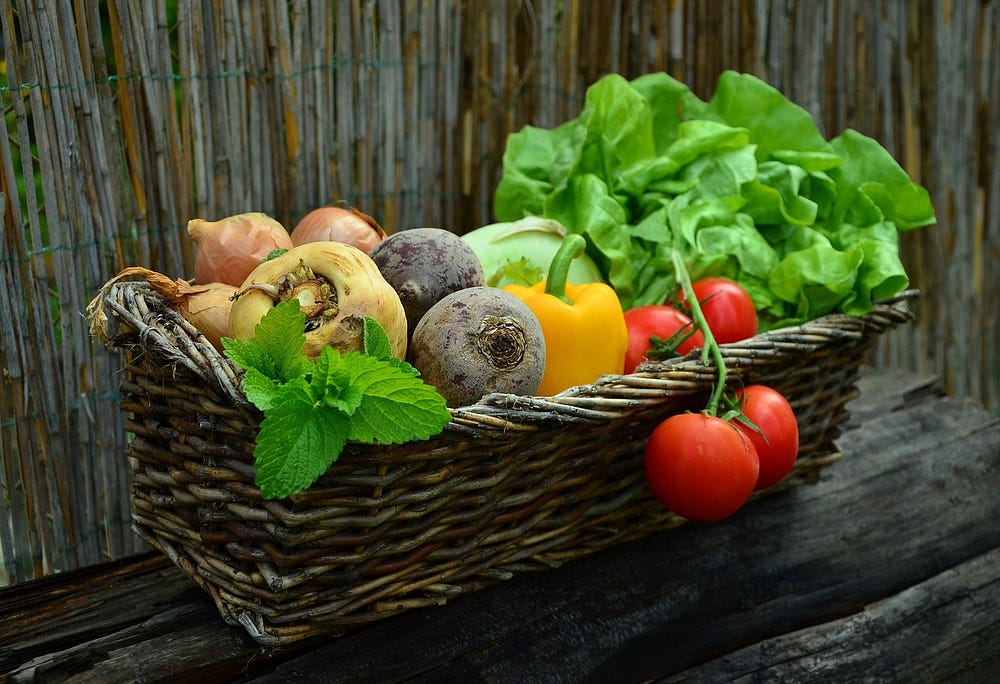
Incorporating Whole Foods into Your Diet
Whole foods are the cornerstone of a healthy diet and a powerful tool for weight loss. By choosing foods in their natural, unprocessed state, you can fuel your body with essential nutrients, keep hunger in check, and boost your weight loss efforts. Here’s why and how to incorporate whole foods into your daily meals.
Why Whole Foods Are Better Than Processed Options
Processed foods are often stripped of nutrients and loaded with additives like sugar, unhealthy fats, and sodium. In contrast, whole foods provide the nutrients your body needs to function optimally.
- Nutrient Density: Whole foods are rich in vitamins, minerals, and antioxidants, unlike processed options, which are often empty calories.
- Satiety: Whole foods, especially those high in fiber, keep you fuller for longer.
- Fewer Additives: Whole foods don’t contain artificial preservatives or additives that can negatively affect your health.
- Better Blood Sugar Control: Whole foods, such as whole grains, release energy slowly, preventing blood sugar spikes and crashes.
By swapping processed snacks and meals for whole food alternatives, you can naturally reduce calorie intake while improving your overall health.
The Role of Fiber-Rich Foods in Controlling Hunger
Fiber is a type of carbohydrate that your body can’t digest, but it plays a key role in weight loss:
- Promotes Fullness: Fiber adds bulk to your meals, making you feel fuller for longer.
- Regulates Digestion: It slows the digestion process, leading to more stable energy levels.
- Supports Gut Health: High-fiber foods feed healthy gut bacteria, which may help regulate weight.
- Curbs Cravings: Fiber helps stabilize blood sugar, reducing cravings for sugary or high-calorie snacks.
Examples of High-Fiber Foods are oats, legumes, berries, broccoli, and whole grains.
Top Whole Foods for Weight Loss: Fruits, Vegetables, and Lean Proteins
Incorporating these nutrient-dense whole foods into your diet can help you meet your weight loss goals:
- Fruits:
- Naturally sweet and packed with vitamins, fiber, and antioxidants.
- Great options: Berries, apples, oranges, and bananas.
- Vegetables:
- Low in calories but high in volume, making them ideal for filling up without overeating.
- Great options: Leafy greens (spinach, kale), cruciferous vegetables (broccoli, cauliflower), and zucchini.
- Lean Proteins:
- Essential for muscle maintenance and boosting metabolism.
- Great options: Chicken breast, turkey, fish (salmon, cod), tofu, and eggs.
- Whole Grains:
- A great source of complex carbohydrates and fiber.
- Great options: Quinoa, brown rice, oats, and whole wheat bread.
- Healthy Fats:
- Satiating and nutrient-dense, but best consumed in moderation.
- Great options: Avocados, nuts, seeds, and olive oil.
By prioritizing whole foods, you’re giving your body the tools it needs to lose weight effectively and sustainably. Start with small changes — swap white bread for whole grain, chips for fruit, and sugary cereal for oats — and you’ll quickly feel the difference in energy, hunger, and overall well-being. Ready to stock up on whole foods? Head to your nearest grocery store with a list and a plan!
The Role of Macronutrients in Weight Loss
Macronutrients — proteins, carbohydrates, and fats — are the foundation of any diet. They provide the energy and nutrients your body needs to function. When balanced correctly, macronutrients play a critical role in weight loss by boosting metabolism, maintaining muscle, and keeping hunger at bay. Let’s break down how each macronutrient contributes to your weight loss journey.
Proteins: How They Boost Metabolism and Support Muscle Retention
Protein is often hailed as the king of weight loss macronutrients — and for good reason!
- Boosts Metabolism: Digesting protein requires more energy than carbohydrates or fats, creating a “thermic effect” that burns more calories.
- Preserve Muscle Mass: During weight loss, protein helps maintain lean muscle, which is crucial for a healthy metabolism.
- Keeps You Full: Protein increases feelings of satiety, reducing the likelihood of overeating or snacking.
Best Sources of Protein:
- Animal-based: Chicken breast, turkey, eggs, fish, and Greek yogurt.
- Plant-based: Lentils, chickpeas, tofu, edamame, and quinoa.
Carbohydrates: Choosing Complex Carbs for Sustainable Energy
Carbs often get a bad reputation, but they’re an essential part of a balanced diet. The key is to focus on complex carbohydrates rather than simple ones.
- Provide Long-Lasting Energy: Complex carbs digest slowly, providing sustained energy and preventing blood sugar spikes and crashes.
- Support Physical Activity: Carbs are your body’s primary energy source, especially during workouts.
- Aid Digestion: Many complex carbs are high in fiber, which supports digestion and keeps hunger in check.
Best Sources of Complex Carbs:
- Whole grains: Oats, brown rice, quinoa, and whole wheat bread.
- Starchy vegetables: Sweet potatoes, butternut squash, and peas.
- Legumes: Lentils, black beans, and kidney beans.
Carbs to Limit: Sugary snacks, white bread, pastries, and sugary beverages, as they provide little nutritional value and lead to energy crashes.
Fats: The Difference Between Healthy and Unhealthy Fats
Fats are often misunderstood in the weight loss world. While some fats are unhealthy, others are essential for overall health and weight management.
- Healthy Fats:
- Promote satiety, keeping you full for longer.
- Support brain health, hormone regulation, and nutrient absorption.
- Examples: Avocados, nuts, seeds, olive oil, and fatty fish (like salmon).
- Unhealthy Fats:
- Trans fats and excessive saturated fats can increase inflammation and the risk of chronic diseases.
- Found in: Fried foods, packaged snacks, margarine, and processed baked goods.
Tip for Incorporating Fats: Stick to moderate portions of healthy fats, as they are calorie-dense. For example, use a tablespoon of olive oil in cooking or add a small handful of nuts to your snack.
By balancing these macronutrients in your diet, you can achieve sustainable weight loss without feeling deprived. Aim for:
- Protein with every meal to boost metabolism and preserve muscle.
- Complex carbs for steady energy and fiber.
- Healthy fats in moderation to stay satisfied.
Understanding the role of macronutrients helps you create meals that fuel your body and align with your weight loss goals. Ready to craft your balanced plate? Start experimenting with combinations of lean protein, whole grains, and healthy fats to see what works best for you!

The Power of Hydration and Beverages
Staying hydrated is a simple yet often overlooked factor in weight loss. Not only does water support your body’s essential functions, but it also plays a significant role in hunger control and metabolism. Choosing the right beverages — and avoiding the wrong ones — can make all the difference in achieving your weight loss goals.
How Water Aids in Weight Loss
Water is a zero-calorie, essential nutrient that can significantly contribute to weight loss in multiple ways:
- Suppresses Appetite: Sometimes, thirst is mistaken for hunger. Drinking water before meals can help you eat less by promoting feelings of fullness.
- Boosts Metabolism: Research shows that drinking cold water temporarily increases your metabolism as your body works to warm it.
- Aids Digestion: Staying hydrated ensures your digestive system runs smoothly, preventing bloating and sluggishness.
- Enhances Workout Performance: Proper hydration keeps your muscles and joints functioning optimally during exercise, allowing you to burn more calories.
Pro Tip: Start your day with a glass of water and keep a bottle handy throughout the day to remind yourself to drink regularly.
Beverages to Avoid: Sugary Drinks and Hidden Calories
While water is your best friend for hydration, many beverages can sabotage your weight loss efforts without you realizing it.
- Sugary Drinks:
- Soft drinks, energy drinks, and sweetened iced teas are loaded with added sugars and empty calories.
- Regular consumption can lead to weight gain and spikes in blood sugar levels.
- Alcoholic Beverages:
- Many cocktails, beers, and even wines are high in calories and sugar.
- Alcohol also slows metabolism and can weaken your resolve to make healthy food choices.
- Hidden-Calorie Drinks:
- Smoothies, flavored coffees, and juices might seem healthy but often contain more sugar and calories than expected.
- Always check the labels and opt for unsweetened versions or make them at home.
Healthy Drink Alternatives
Replacing calorie-laden beverages with healthier options can make a big impact on your calorie intake and overall health. Here are some great alternatives:
- Green Tea:
- Contains antioxidants like catechins, which may boost fat-burning and metabolism.
- A natural energy booster without the added sugar of sodas or energy drinks.
- Herbal Teas:
- Caffeine-free options like chamomile, peppermint, and rooibos are soothing and hydrating.
- Many herbal teas can help reduce bloating or improve digestion.
- Infused Water:
- Add slices of fruits (like lemon, lime, or berries), cucumber, or fresh mint to water for natural flavor.
- Helps you drink more water without adding calories.
- Sparkling Water:
- A bubbly alternative to soda that satisfies your craving for carbonation without added sugars.
- Black Coffee:
- A low-calorie option that can boost metabolism when consumed in moderation. Avoid adding sugar, cream, or flavored syrups.
Hydration isn’t just about drinking more water — it’s about making smart beverage choices that support your weight loss journey. By prioritizing water and healthy drink alternatives, you can curb cravings, stay energized, and reduce your calorie intake effortlessly. Ready to sip smarter? Start by swapping one sugary drink with water or tea today!
https://www.youtube.com/watch?v=c06dTj0v0sM
Mindful Eating Techniques for Long-Term Success
Mindful eating is a powerful approach to not only losing weight but also maintaining a healthy relationship with food in the long term. By becoming more aware of what, when, and why you eat, you can make better decisions and avoid common pitfalls like emotional eating or overeating. Let’s explore how to master this transformative technique.
What Is Mindful Eating, and Why Does It Work?
Mindful eating is the practice of paying full attention to your eating experience — without judgment or distraction.
- Key Principles of Mindful Eating:
- Eat slowly and savor each bite.
- Focus on the taste, texture, and aroma of your food.
- Recognize hunger and fullness cues to guide when and how much you eat.
- Why It Works:
- Reduces Overeating: Eating slowly gives your brain time to register fullness, preventing overconsumption.
- Enhances Satisfaction: When you truly enjoy your food, you’re less likely to crave unhealthy snacks.
- Breaks Automatic Habits: It helps you identify emotional or habitual triggers for eating, allowing you to respond consciously rather than automatically.
Tips for Avoiding Emotional Eating and Binge-Eating Triggers
Emotional eating often stems from stress, boredom, or other feelings unrelated to physical hunger. Here’s how to address and prevent it:
- Identify Triggers:
- Keep a journal to track your emotions and eating habits. This helps you pinpoint patterns, such as eating when stressed or lonely.
- Find Healthy Coping Mechanisms:
- Replace eating with non-food activities like going for a walk, journaling, or meditating.
- Practice the Pause:
- When you feel the urge to eat, pause and ask yourself: “Am I truly hungry, or am I trying to soothe an emotion?”
- Create a Distraction-Free Environment:
- Avoid eating in front of screens (TV, phone, or computer) to stay present with your meal.
- Prepare Balanced Meals:
- Eating satisfying meals with protein, fiber, and healthy fats can prevent the blood sugar crashes that often trigger binge eating.
How to Listen to Your Body’s Hunger and Fullness Cues
Your body naturally signals when it needs food and when it’s had enough — if you learn to listen.
- Understand Hunger Levels:
- True Hunger: Gradual onset, accompanied by stomach growling or low energy.
- Emotional Hunger: Sudden and specific cravings, often for comfort foods.
- Use the Hunger-Fullness Scale:
- Rate your hunger on a scale from 1 (starving) to 10 (stuffed). Aim to eat when you’re at 3–4 (slightly hungry) and stop at 6–7 (comfortably full).
- Slow Down Your Eating:
- Take smaller bites, chew thoroughly, and put your fork down between bites. This helps you notice when you’re satisfied.
- Check-in With Yourself Mid-Meal:
- Pause halfway through your meal to assess if you’re still hungry or already satisfied.
- Respect Fullness:
- Avoid eating past fullness, even if food is still on your plate. Save leftovers for later instead.
Mindful eating isn’t about perfection — it’s about progress. By practicing these techniques, you can break free from emotional eating, stay attuned to your body’s needs, and build sustainable habits for long-term success. Ready to give it a try? Start with just one mindful meal a day and observe how it transforms your relationship with food!
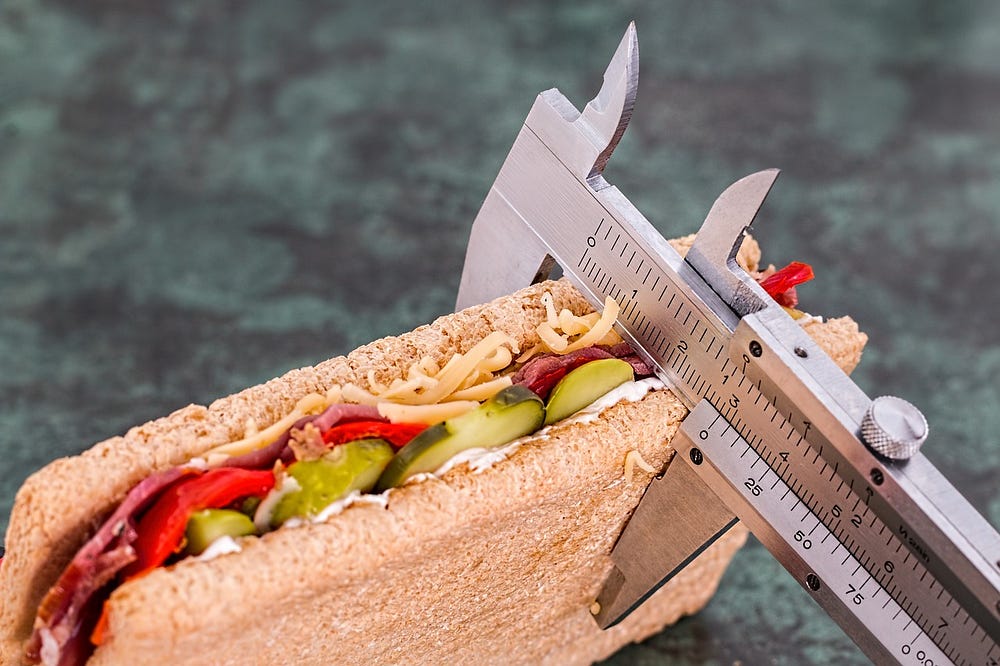
Popular Weight Loss Diets: Pros and Cons
The world of weight loss diets can feel overwhelming, with each promising fast results and lasting success. However, understanding the pros and cons of popular diets can help you make informed decisions that align with your lifestyle and goals. Here’s a breakdown of three well-known diets — Intermittent Fasting, Keto, and the Mediterranean Diet — and insights into why no single diet works for everyone.
A Look at Intermittent Fasting, Keto, and Mediterranean Diets
- Intermittent Fasting (IF):
- What It Is: An eating pattern that alternates between periods of fasting and eating (e.g., 16:8 method or alternate-day fasting).
- Pros:
- Helps control calorie intake by limiting eating windows.
- May improve insulin sensitivity and metabolic health.
- Does not restrict specific food groups, making it flexible.
- Cons:
- Can be challenging to adjust to fasting periods, especially for beginners.
- May lead to overeating during eating windows.
- Not suitable for individuals with certain health conditions, such as diabetes or eating disorders.
- Keto Diet:
- What It Is: A high-fat, low-carb diet designed to put your body into ketosis, where it burns fat for energy instead of carbohydrates.
- Pros:
- Effective for quick weight loss and appetite suppression.
- May improve energy levels and mental clarity once adapted.
- Beneficial for some medical conditions, such as epilepsy.
- Cons:
- Highly restrictive and difficult to sustain long-term.
- Can cause side effects like “keto flu” during the adaptation phase.
- May lead to nutrient deficiencies if not carefully planned.
- Mediterranean Diet:
- What It Is: A diet inspired by traditional eating habits in Mediterranean countries, emphasizing fruits, vegetables, whole grains, nuts, fish, and olive oil.
- Pros:
- Rich in nutrients and heart-healthy fats.
- Flexible and easy to sustain long-term.
- Supported by extensive research showing benefits for weight loss and overall health.
- Cons:
- Weight loss may be slower compared to more restrictive diets.
- Requires commitment to cooking and preparing fresh, whole foods.
Evaluating Diets for Long-Term Sustainability
While some diets may yield quick results, the real challenge is maintaining those results over time. To assess sustainability:
- Flexibility: Does the diet allow for variety and occasional indulgences
- Realistic Expectations: Can you stick to this way of eating for months or years?
- Balanced Nutrition: Does the diet provide all essential nutrients?
- Lifestyle Compatibility: Does it align with your schedule, cultural preferences, and activity level?
Sustainable diets are those that don’t feel like a constant struggle but instead become a natural part of your life.
Why No “One Size Fits All” Approach Exists
Every individual has unique needs, preferences, and challenges, which is why a diet that works for one person may not work for another. Key factors to consider include:
- Metabolism: Genetic differences affect how our bodies respond to diets.
- Health Conditions: Certain diets may exacerbate or alleviate specific conditions.
- Personal Preferences: Food choices should be enjoyable to ensure adherence.
- Lifestyle: A diet must fit seamlessly into your daily routine to be sustainable.
Instead of focusing on rigid rules, prioritize building habits that work for you, such as mindful eating, portion control, and prioritizing whole foods.
Weight loss is not just about choosing a diet — it’s about finding a balanced, enjoyable, and sustainable approach to eating. Ready to start your journey? Experiment with different strategies, listen to your body, and don’t be afraid to tweak or mix approaches to suit your unique needs!
https://www.youtube.com/watch?v=jwWpTAXu-Sg
Supplements and Weight Loss: Do They Help?
When it comes to weight loss, supplements are often marketed as magic solutions, promising rapid results with minimal effort. While some supplements may support your journey, it’s crucial to understand their limitations and risks. Let’s explore popular weight loss supplements, when they might be useful, and why they shouldn’t replace healthy habits.
Popular Supplements for Weight Loss
- Green Tea Extract:
- What It Is: A concentrated form of antioxidants found in green tea, including catechins, which may boost fat oxidation.
- How It Helps:
- Slightly increases metabolism and fat burning.
- Contains caffeine, which may improve energy levels.
- Limitations:
- Effects are modest and unlikely to result in significant weight loss on their own.
- Protein Powders:
- What It Is: A convenient source of dietary protein, often made from whey, casein, or plant-based sources.
- How It Helps:
- Supports muscle retention and recovery during calorie deficits.
- Promotes satiety, helping to reduce overall calorie intake.
- Limitations:
- Works best when combined with exercise and a balanced diet.
- Garcinia Cambogia:
- What It Is: A tropical fruit extract containing hydroxycitric acid, claimed to suppress appetite and block fat production.
- How It Helps:
- Some studies suggest it may modestly reduce appetite.
- Limitations:
- Evidence is inconsistent, and effects are minimal compared to lifestyle changes.
- Fiber Supplements (e.g., Glucomannan):
- What It Is: Soluble fiber that expands in the stomach, creating a feeling of fullness.
- How It Helps:
- Reduces hunger and supports digestive health.
- Limitations:
- Works best alongside a fiber-rich diet, not as a replacement.
- Caffeine-Based Supplements:
- What It Is: Pills or powders containing caffeine, often combined with other stimulants.
- How It Helps:
- Temporarily increases energy and metabolism.
- Limitations:
- Overuse can lead to tolerance, dependency, or side effects like jitteriness and insomnia.
Understanding When Supplements Are Helpful vs. Unnecessary
Supplements can be helpful in specific situations, but they’re not a substitute for a balanced diet and exercise:
- Helpful When:
- Filling nutrient gaps (e.g., protein powders for those with high protein needs).
- Supporting specific health needs (e.g., fiber for improved digestion).
- Boosting performance during exercise (e.g., caffeine for energy).
- Unnecessary When:
- Replacing healthy habits (e.g., taking fat burners while maintaining poor dietary choices).
- Overpromising results (e.g., expecting rapid weight loss without lifestyle changes).
Before using any supplement, consult with a healthcare professional, especially if you have underlying conditions or are taking medications.
Risks of Relying Solely on Supplements
While supplements may seem like an easy solution, relying on them exclusively can lead to several problems:
- Limited Effectiveness:
- Most supplements provide marginal benefits and cannot replace a calorie deficit or regular exercise.
- Potential Side Effects:
- Common side effects include digestive issues, increased heart rate, and sleep disturbances.
- Some supplements may interact with medications or exacerbate health conditions.
- Lack of Sustainability:
- Supplements don’t teach long-term habits like portion control, meal planning, or mindful eating.
- Financial Costs:
- Many supplements are expensive and offer little return on investment compared to whole foods.
- Unregulated Industry:
- The supplement industry is not strictly regulated, meaning products may contain misleading labels, contaminants, or unproven ingredients.
Supplements can play a supportive role in your weight loss journey but should never replace the foundation of healthy eating, exercise, and sustainable habits. Think of them as tools, not shortcuts, and always prioritize a balanced, nutrient-rich diet. Want to see real progress? Focus on what’s on your plate first before turning to pills and powders!
https://www.youtube.com/watch?v=F0o3h96D_go
FAQ: Nutritional Approaches to Weight Loss — Your Comprehensive Guide to Healthy Eating in 2024
1. What is the most effective way to lose weight through nutrition?
The most effective way to lose weight is by creating a calorie deficit, meaning you consume fewer calories than your body needs to maintain its current weight. This can be achieved by eating a balanced diet rich in whole foods like vegetables, lean proteins, whole grains, and healthy fats, while limiting processed foods and high-calorie snacks. Regular exercise also plays a crucial role in maintaining a calorie deficit and supporting overall health.
2. How do macronutrients (proteins, carbs, and fats) affect weight loss?
Macronutrients are essential for providing energy and supporting body functions:
- Proteins help preserve muscle mass, boost metabolism, and increase feelings of fullness, which can reduce overall calorie intake.
- Carbohydrates, particularly complex carbs (whole grains, vegetables), provide sustained energy and are less likely to cause spikes in blood sugar.
- Fats are important for hormone regulation and satiety. Healthy fats (avocados, nuts, olive oil) can help curb cravings and reduce overeating.
3. Can I lose weight without counting calories?
Yes, it’s possible to lose weight without meticulously counting calories, but it may require more focus on portion control, mindful eating, and healthy food choices. Focusing on whole foods, such as vegetables, lean proteins, and healthy fats, and avoiding processed and sugary foods can naturally help regulate calorie intake.
4. Is intermittent fasting an effective weight loss strategy?
Intermittent fasting (IF) can be effective for some people as it restricts eating to certain hours of the day, naturally reducing calorie intake. Additionally, it may help improve insulin sensitivity and boost fat burning. However, IF isn’t for everyone, and it’s important to find an approach that works with your lifestyle and health conditions.
5. Why are portion control and mindful eating important for weight loss?
Portion control helps prevent overeating by ensuring you eat just enough to satisfy hunger. Mindful eating encourages paying full attention to your food, eating slowly, and recognizing hunger and fullness cues, which helps you avoid emotional eating and overeating. Both practices contribute to long-term weight loss by creating healthier relationships with food.
6. Are there any foods I should avoid for weight loss?
While there’s no single “bad” food, certain foods can hinder weight loss efforts:
- Sugary beverages (sodas, sweetened coffee) contribute a significant number of empty calories.
- Processed snacks and baked goods often contain added sugars, unhealthy fats, and low nutrients.
- Refined grains like white bread and pasta can cause blood sugar spikes and are less filling than whole grains.
7. How do I balance eating out with my weight loss goals?
Eating out doesn’t have to derail your weight loss journey. Choose healthier options like grilled rather than fried foods, ask for dressings on the side, and focus on portion control. Many restaurants offer lighter menu options, and sharing dishes with a friend can help manage portion sizes.
8. Can supplements help with weight loss?
Supplements can support weight loss efforts by providing nutrients that may be lacking in your diet or boosting metabolism slightly (e.g., green tea extract or protein powders). However, they should not replace healthy eating habits and exercise. Relying solely on supplements is not a sustainable or effective long-term weight loss strategy.
9. How important is hydration for weight loss?
Staying hydrated is crucial for weight loss. Drinking water helps with digestion, reduces hunger, and boosts metabolism. Sometimes, thirst is mistaken for hunger, leading to unnecessary snacking. Water is also calorie-free, making it the best beverage choice for those trying to lose weight.
10. How long does it take to see weight loss results through diet?
Weight loss varies for each individual, but with a healthy, calorie-controlled diet and regular exercise, you may start noticing changes in as little as 2–4 weeks. Sustainable weight loss typically occurs at a rate of 1–2 pounds per week, which is healthier and more maintainable in the long run.
11. Is the Mediterranean diet good for weight loss?
The Mediterranean diet is an excellent option for weight loss as it emphasizes whole foods, healthy fats, lean proteins, and plenty of fruits and vegetables. It’s rich in antioxidants, supports heart health, and is sustainable in the long term. Since it doesn’t involve extreme restrictions, it’s easier to maintain compared to many other diets.
12. What are the best foods for weight loss?
The best foods for weight loss are those that are nutrient-dense and help you feel full with fewer calories:
- Leafy greens (spinach, kale)
- Whole grains (quinoa, oats, brown rice)
- Lean proteins (chicken, turkey, tofu, beans)
- Healthy fats (avocados, olive oil, nuts)
- Non-starchy vegetables (broccoli, cauliflower, zucchini)
These foods provide fiber, protein, and healthy fats, all of which support satiety and help manage calorie intake.
13. What is the role of exercise in weight loss?
Exercise plays a key role in weight loss by burning calories, increasing metabolism, and building muscle mass. Cardiovascular exercises (running, cycling) burn calories, while strength training builds muscle, which helps increase resting metabolism. Combining both types of exercise with a healthy diet creates the most effective and sustainable weight loss strategy.
14. Should I follow a specific diet for weight loss?
There’s no one-size-fits-all approach to weight loss. It’s important to choose a diet that suits your preferences, lifestyle, and health needs. Popular options like intermittent fasting, the Mediterranean diet, and the ketogenic diet may work for some, but the best diet is one that you can maintain long-term and that helps you develop a healthy relationship with food.
Conclusion:
Losing weight doesn’t have to mean sacrificing your favorite foods or following a restrictive diet. With the right nutritional strategies, you can achieve your goals in a sustainable, healthy way. From portion control and whole foods to understanding macronutrients and practicing mindful eating, these approaches ensure long-term success. Start small, stay consistent, and remember — this is a marathon, not a sprint. Ready to take the first step toward a healthier you? Begin today!

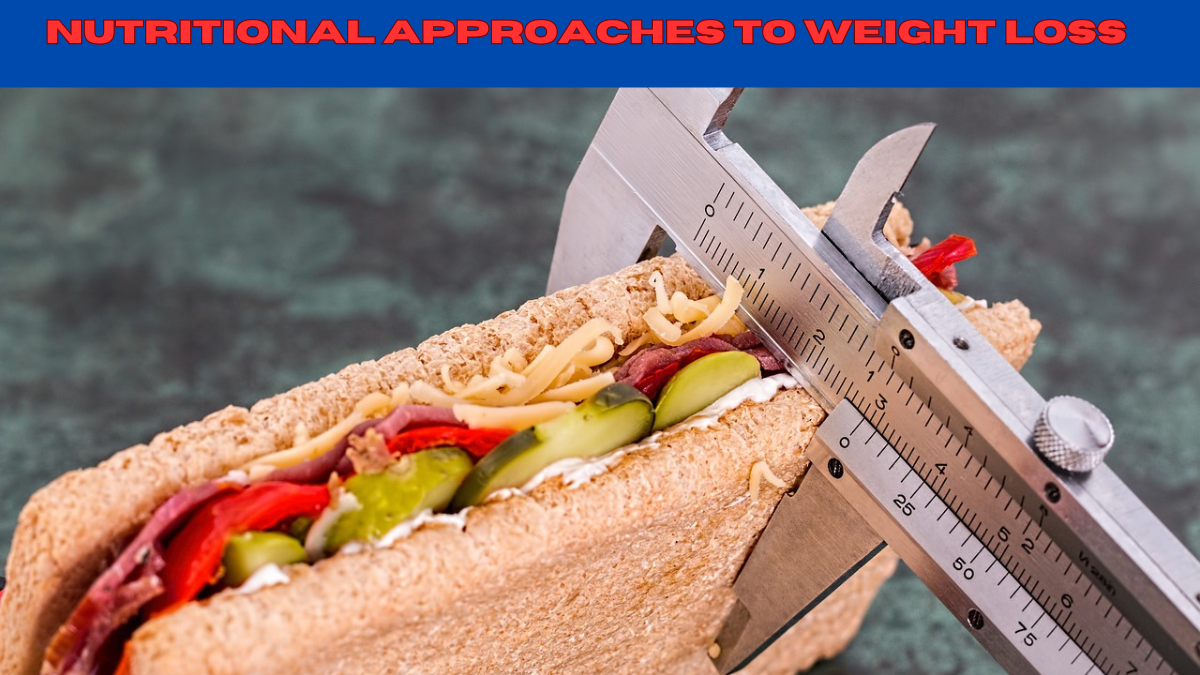
Leave a Reply